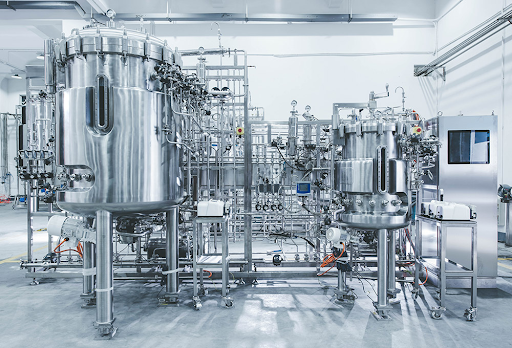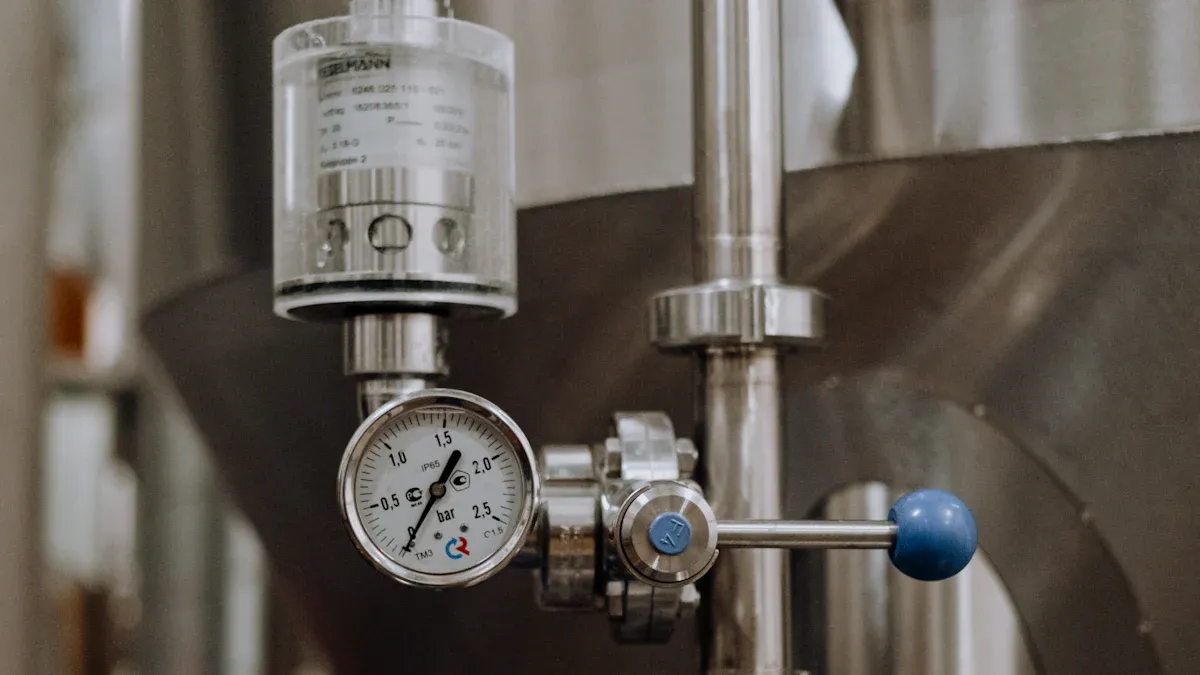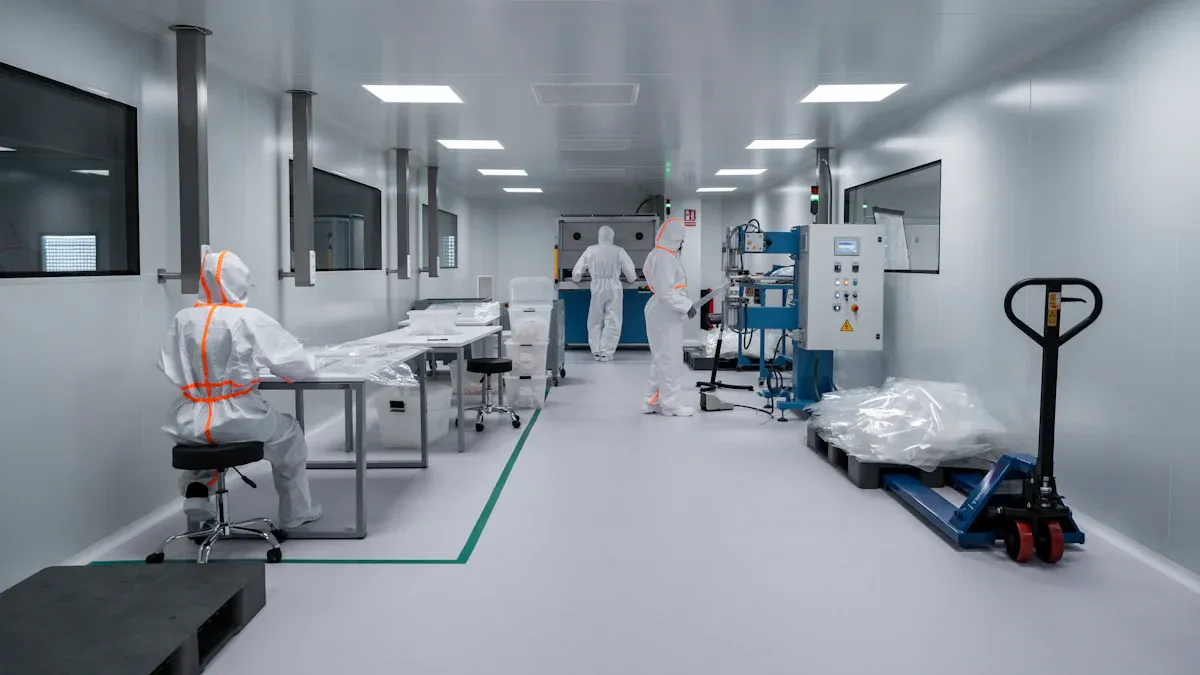

You can make more products by making your fermentor system better. Watching fermentation closely helps things work well and gives you better products. If you change important settings, you help your process make more and waste less. New tools help you check things easily, so you can find problems early.
Fermentor Optimization Parameters

Optimizing your fermentor parameters helps you get more product, save money, and improve quality. When you control these factors, you make your microbial process more reliable. You also reduce waste and lower the risk of failed batches. Many companies use advanced fermentor for bioreactions to reach these goals. Below, you will find key parameters and tips for each one.
Temperature
Temperature affects how fast microbes grow and make products. If you keep the right temperature, your fermentation equipment works better. Too much heat can kill microbes. Too little slows them down.
- Use digital thermometers to check temperature often.
- Set alarms to warn you if the temperature changes too much.
- Place your fermentor in a room with stable air to avoid sudden changes.
Tip: Try to keep the temperature steady during the whole process. Sudden changes can hurt your yield.
pH
pH tells you if your solution is acidic or basic. Microbes need a certain pH to work well. If the pH goes outside the best range, your product drops.
- Use pH sensors that send data to your computer.
- Add acid or base slowly to adjust pH.
- Clean your sensors often to keep them accurate.
Note: Check pH at the start and end of each batch. This helps you spot problems early.
Oxygen
Oxygen helps many microbes grow and make products. If you do not give enough oxygen, your yield drops. Too much can also cause problems.
- Use air pumps to add oxygen to your fermentor.
- Watch for bubbles to see if air is moving well.
- Use oxygen sensors for real-time data.
Tip: Adjust the airflow based on the needs of your microbial process. Some microbes need more, some need less.
Nutrients
Nutrients feed your microbes. If you give too little, they stop growing. Too much can waste money and cause unwanted products.
- Measure nutrients before you start each batch.
- Add nutrients in small amounts during the process.
- Use high-quality ingredients for better results.
Tip: Keep a log of what you add and when. This helps you repeat good results.
Agitation
Agitation mixes everything in your fermentor. Good mixing spreads oxygen and nutrients. Poor mixing can cause dead spots where microbes do not grow.
- Use a stirrer or shaker to keep things moving.
- Check the speed often. Too fast can hurt microbes. Too slow can cause clumps.
- Watch for foam, which can mean you are mixing too hard.
Note: Adjust agitation based on the type of fermentation equipment you use and the needs of your microbes.
By watching and adjusting these parameters, you help your advanced fermentor for bioreactions work at its best. You also make your microbial process more stable and productive.
Advanced Technologies


New technology helps you control your fermentor better. You can use automation, sensors, and AI analytics to make your microbial process work faster. These tools show you data right away and help you decide quickly. Using these advanced solutions makes your fermentation equipment work better and gives you better results.
Automation
Automation lets machines run your fermentor for you. Machines can add nutrients, change temperature, and control pH by themselves. You set the rules, and the system does the work.
- You save time because you do not check everything yourself.
- You make fewer mistakes because machines follow rules closely.
- You can make more batches and get higher yield.
Tip: Use automation for simple jobs. This gives you more time to improve your advanced fermentor for bioreactions.
Sensors
Sensors watch your fermentor and send you data all the time. You can see temperature, pH, oxygen, and nutrient levels.
- Sensors help you find problems early.
- You can fix things before your yield drops.
- You get alerts if something is wrong.
Note: Clean your sensors often. Dirty sensors can give you bad data and hurt your microbial process.
AI Analytics
AI analytics use computer programs to look at your data. These programs find patterns and tell you ways to make your process better.
- AI can guess when you should change your fermentation equipment.
- You can use AI to plan batches and stop waste.
- AI helps you learn from old results and make smarter choices.
Math modeling works with AI to give you more control. You can use models to test changes before you try them for real. This saves you time and money.
Alert: Try using AI analytics and modeling together. You will see faster improvements in your fermentor yields.
Implementation Strategies
When you want to use next-gen solutions in your production, you need a clear plan. You can follow these steps to make sure your changes work well and help your team.
Scale-Up
You start by testing your process on a small scale. This helps you find problems before you use big tanks or new fermentation equipment. You can use a pilot Fermentor to see how your advanced fermentor for bioreactions works.
- Write down each step you take.
- Change only one thing at a time.
- Watch how your microbial process reacts to new settings.
Tip: Always compare your results with your old process. This shows if your changes help or hurt your yield.
Monitoring
You need to watch your process all the time. Use sensors and software to track temperature, pH, and oxygen. You can set up alerts to warn you if something goes wrong.
- Check your data every day.
- Clean your sensors often.
- Train your team to spot problems early.
Note: Good monitoring helps you fix small issues before they become big problems.
Data Analysis
You collect a lot of data from your fermentor. You need to look at this data to find ways to improve. Use simple charts or AI tools to spot trends.
- Meet with your team to talk about the data.
- Make small changes and see what happens.
- Keep records so you can repeat what works.
Alert: Training your team helps everyone use new tools and understand the data. Change can be hard, but good training makes it easier.
You may face problems like inhibitors in your production strains. You can solve these by testing different nutrients or changing your process. Stay patient and keep learning from your results.
Fermentor Success Stories
Pharmaceuticals
Next-gen fermentor solutions can change how drugs are made. Many companies get more products and spend less money by using new fermentation equipment. One team used an advanced fermentor for bioreactions. Their antibiotic output went up by 20%. They checked temperature and pH with sensors every minute. Automation helped them add nutrients at the right time. Their microbial process stayed strong and steady.
- You can use these best practices:
- Test your fermentor settings before you make bigger batches.
- Use real-time data to decide quickly.
- Train your team to find problems early.
Tip: Always write down what happens in each batch. You can spot patterns that help you make your process better.
Food & Beverage
Better fermentor systems help food and drink makers get more products. A yogurt company upgraded their fermentation equipment and used AI analytics. They watched oxygen and agitation with sensors. Their advanced fermentor for bioreactions helped them waste less and save money. Their product quality went up by 15%. Their microbial process got faster.
- Here are lessons for you:
- Use sensors to watch every step.
- Change agitation to fit your product.
- Look at data with your team after each batch.
Note: Small changes in your fermentor can make taste and texture much better.
You can use these examples to get better results. Next-gen fermentor solutions help you make more, save money, and improve quality. You can learn from others and use these best practices in your own process.
You can make more products with next-gen Fermentor solutions. Work on making your process better and use advanced fermentor for bioreactions. Smart fermentation equipment helps you a lot. Sensors and AI let you watch your microbial process all the time. You can change things fast if you need to. Mathematical modeling lets you try ideas before using them for real.
Remember: These strategies help you work better and make better products. Try them now to see good changes in your production.

